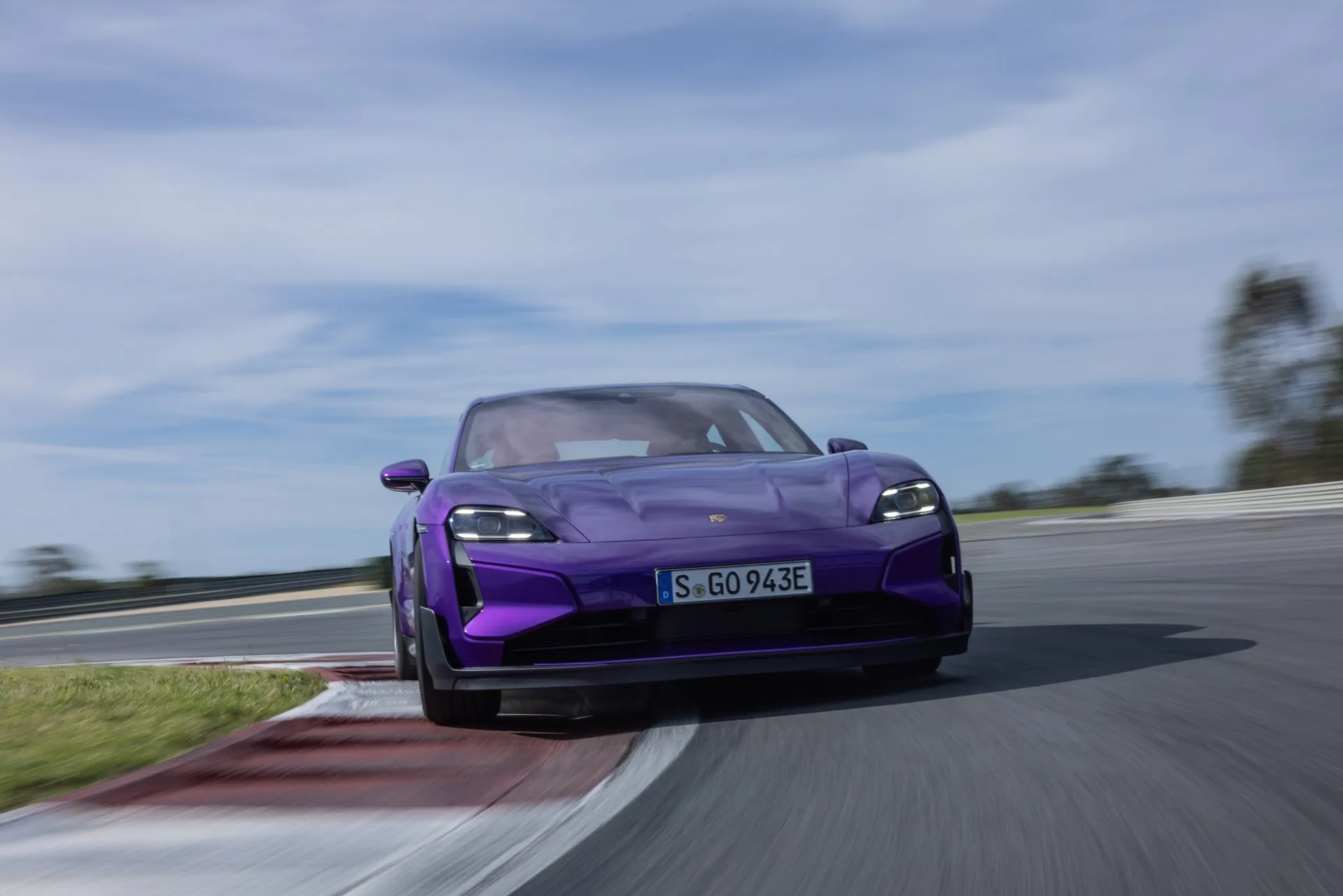For those enamored with the thrill of one-off drag races, numerous EVs boast acceleration figures nearing the 2.2 seconds claimed by the 2025 Porsche Taycan Turbo GT. However, many of these EVs are forced to pause and cool their battery packs or motors after just a few brief laps, offering only fleeting excitement.
Porsche distinguishes the Taycan Turbo GT with its emphasis on handling, dynamics, and record-setting track times, maintaining relentless forward propulsion while subjecting occupants to remarkably high lateral G-forces.
Distinguishing itself even among performance EVs, the Taycan Turbo GT is designed for hardcore performance. Porsche engineered it to withstand a full lap of Germany’s demanding Nürburgring Nordschleife—nearly 13 miles—in near-showroom-stock condition, without succumbing to the 60-degree Celsius battery temperature limit that triggers power reduction in other EVs.
Last year, Porsche achieved this feat, completing a lap in just 7:07.55, nearly matching the current lap record set by the Rimac Nevera, an electric hypercar. Additionally, the Taycan set a record at Laguna Seca.
Throughout these achievements, Porsche has enhanced the Taycan’s practicality with improvements in battery, thermal management, and efficiency, maximizing the potential of the 800-volt J1 platform specifically developed for the Taycan.
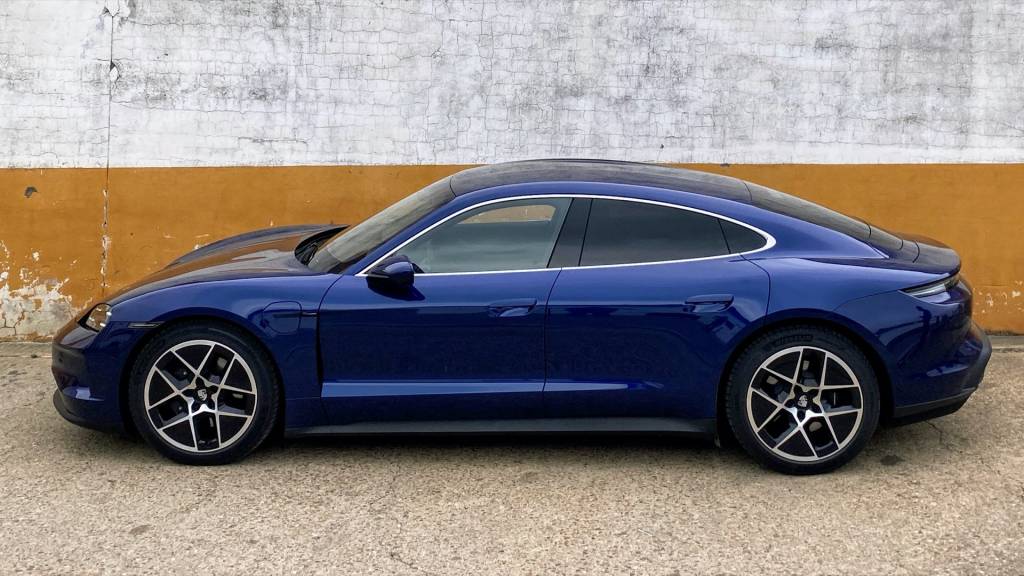
2025 Porsche Taycan
Thanks to these enhancements, much of the lineup is expected to achieve over 300 miles of EPA range. A slightly larger battery pack with 97 kWh of usable capacity contributes to this achievement, alongside revised battery chemistry and thermal improvements. These advancements enable peak charge rates and optimal performance even at lower temperatures.
As a result, all Taycan versions, including the base model depicted in the images above, are now more likely to achieve rapid charging. This translates to a 10-80% charge in as little as 18 minutes, facilitated by a higher peak power of 320 kW from a CCS connector.

2025 Porsche Taycan Turbo GT
Porsche highlights that enhancements to the Taycan’s thermal systems not only improve cold-weather performance and charging times but also enhance its track capabilities. Among the lineup, the Turbo GT and Turbo GT with Weissach Package stand out for their Nürburgring pedigree and suitability for weekend track outings.
The Taycan features a track conditioning mode designed to cool the battery to a minimum of 12°C. According to Porsche chassis development manager Christian Wolfsried, this temperature strikes a balance, ensuring maximum power while keeping the battery sufficiently cool. This prevents the battery from reaching 60 degrees, the threshold at which the powertrain reduces output.
Illustrating the Taycan’s effective cooling, the battery pack temperature in the car I experienced, which had already undergone multiple hot laps and launches, measured at 34 degrees—far from any concern.
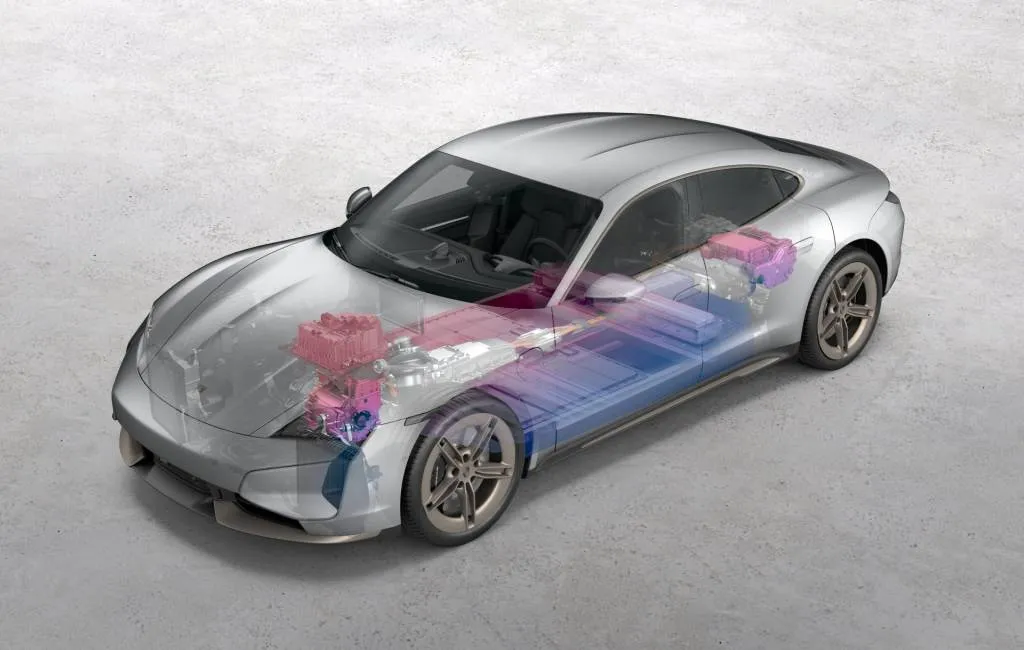
2025 Porsche Taycan
The Taycan still utilizes three cooling circuits, maintaining its existing configuration. However, there’s a significant improvement in cooling power, thanks to a new 800-volt A/C compressor.
The Turbo GT and Weissach Package models benefit from this enhanced cooling. Both variants generate 777 hp and 855 lb-ft of torque, featuring a lower gear ratio for a more robust version of the two-speed dog-ring gearbox. This gearbox reserves its low gear for launches and high-performance driving. With the Taycan’s launch control engaged—activated by firmly holding the brake pedal while flooring and releasing the accelerator—the power output reaches up to 1,019 hp and 988 lb-ft of torque, or 1,092 hp for a 2.0-second acceleration burst.
These increased outputs are achieved through a higher-power motor in the rear, managed by a special 900-amp inverter, surpassing the 600-amp unit found in the rest of the lineup.
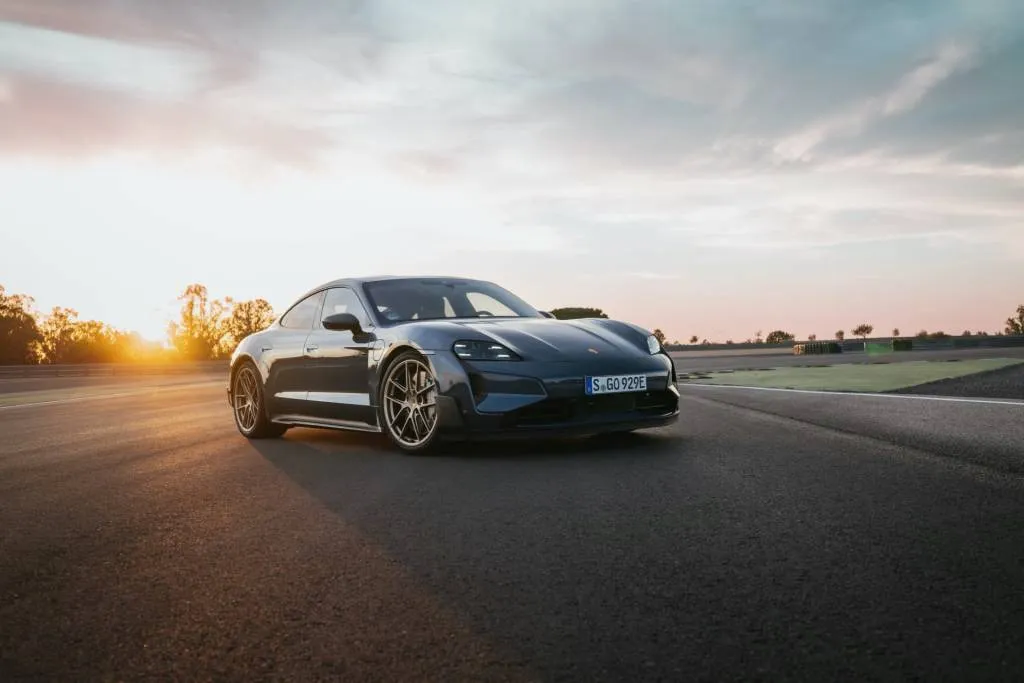
2025 Porsche Taycan Turbo GT
Whether you opt for the Taycan Turbo GT or the 2025 Taycan with the Weissach Package, you’re in for an exceptional driving experience. The Turbo GT focuses on luxury and performance, maintaining its status as a four-seat grand-touring car. On the other hand, the Taycan with the Weissach Package sheds some luxury features in favor of weight-saving measures and performance enhancements, transforming it into a street-legal race car.
Both models feature an air suspension and Porsche’s hydraulic-based Active Ride suspension, providing excellent handling. They also come equipped with staggered-width Pirelli P Zero R and Trofeo RS summer performance tires, offering exceptional traction and durability. The Trofeo RS tires, in particular, have been extensively tested with the Taycan at Laguna Seca and the Nürburgring, while the P Zero R is suitable for both track use and daily driving. These tires were specifically chosen to complement the Taycan’s aerodynamics, ensuring optimal performance in all conditions.

Porsche Taycan Turbo GT and Weissach package, at Monteblanco circuit
In the pit lane, I step into the Turbo GT and immediately notice its similarities to other Taycan trims, albeit with some enhancements such as a chunky suede steering wheel and paddle shifters. Of course, the real difference lies in the significant increase in horsepower.
A rotary steering-wheel toggle activates “Attack Mode,” which is indicated on the gauge screen. While Push-to-Pass in other Taycan models adds up to 94 hp for 10 seconds, Attack Mode provides up to 161 hp for the same duration. It also switches to a simplified gauge display, customized sound, and performance driving mode. Unlike Push-to-Pass, Attack Mode can be used again after just a 4.0-second pause, contingent on battery temperature. Additionally, pulling the right paddle activates Attack Mode, while the left paddle increases recuperation.
Taking on laps of the Circuito Monteblanco in southern Spain, I navigate its challenging combination of corners and straight sections. Despite my limited time on the track, I quickly realized that the Turbo GT offers capabilities beyond my reach. Its traction is tenacious, handling is crisp, and the steering wheel provides clear communication. The traction and stability systems seamlessly adapt to the lateral G-forces, enhancing the overall driving experience.
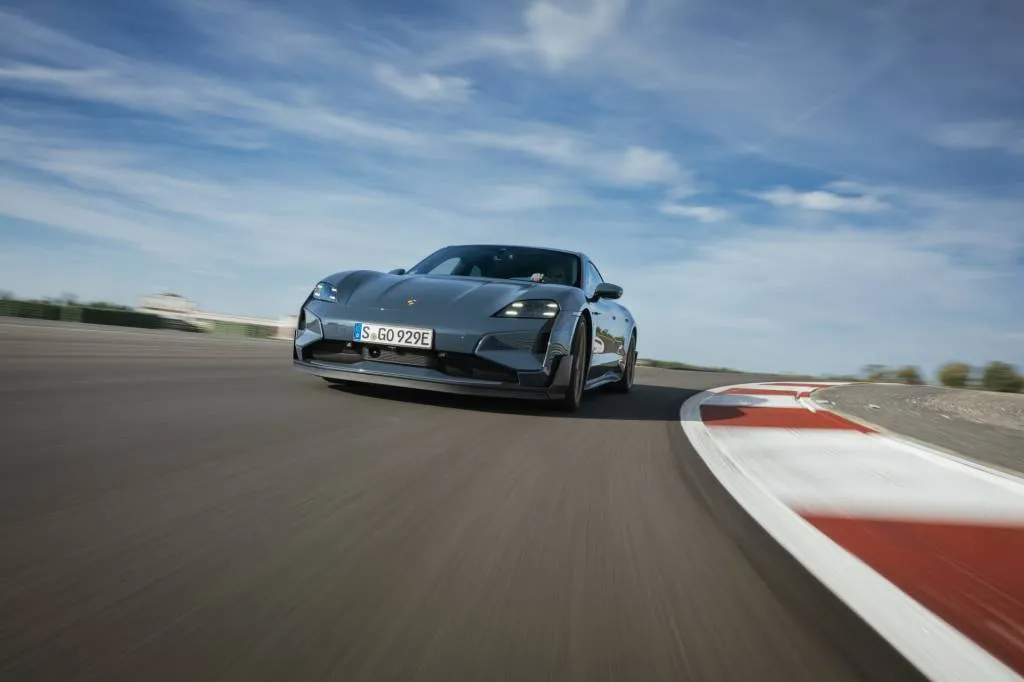
2025 Porsche Taycan Turbo GT
Credit for the impressive performance of the Taycan, at least partially, goes to Porsche’s Active Ride suspension. This system applies specific loads to each wheel based on the vehicle’s dynamics and immediate requirements, ensuring an optimal connection to the road. While it effectively isolates the Taycan from rough road surfaces during everyday driving, it plays a different role on the track by adjusting loads to keep the vehicle stable on smooth surfaces.
Across the Taycan lineup, whether it’s models designed for hot laps or those focused on sports car handling, the steering is precise and the seating position is low, with the mass of the battery pack providing a stable feel. It’s easy to forget that you’re driving a 5,000-pound vehicle.
In the Turbo GT, the simulated sound is different, emitting a lower and more aggressive tone reminiscent of the 911 GT3. Particularly during acceleration, the rear motor’s sound is more pronounced compared to other Taycans, accompanied by a distinct change in whine as the gearbox shifts from low to high.
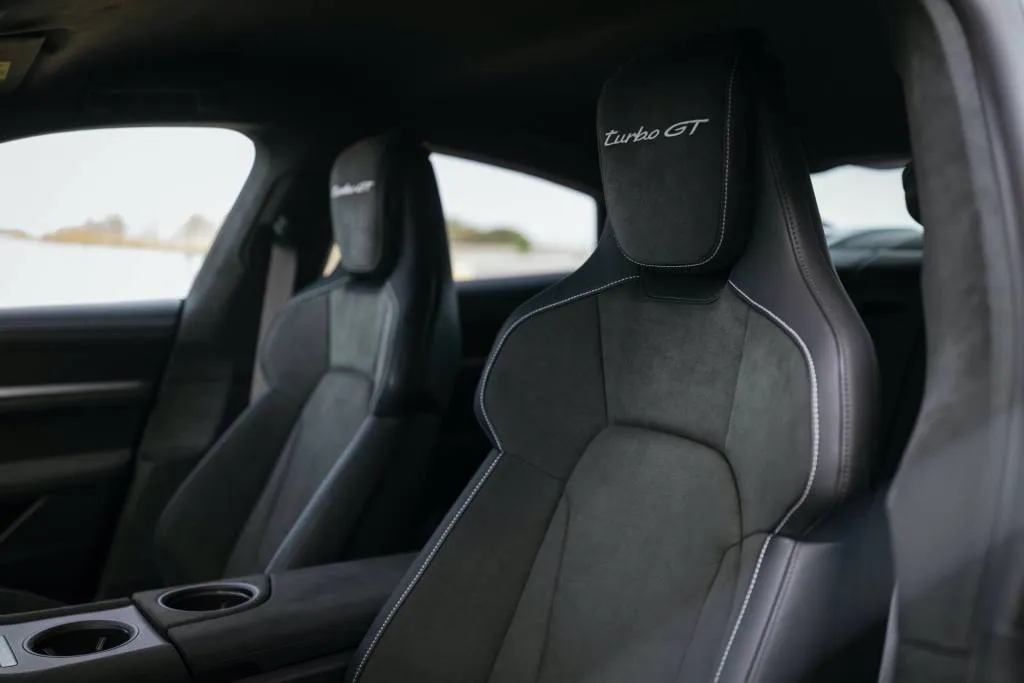
2025 Porsche Taycan Turbo GT
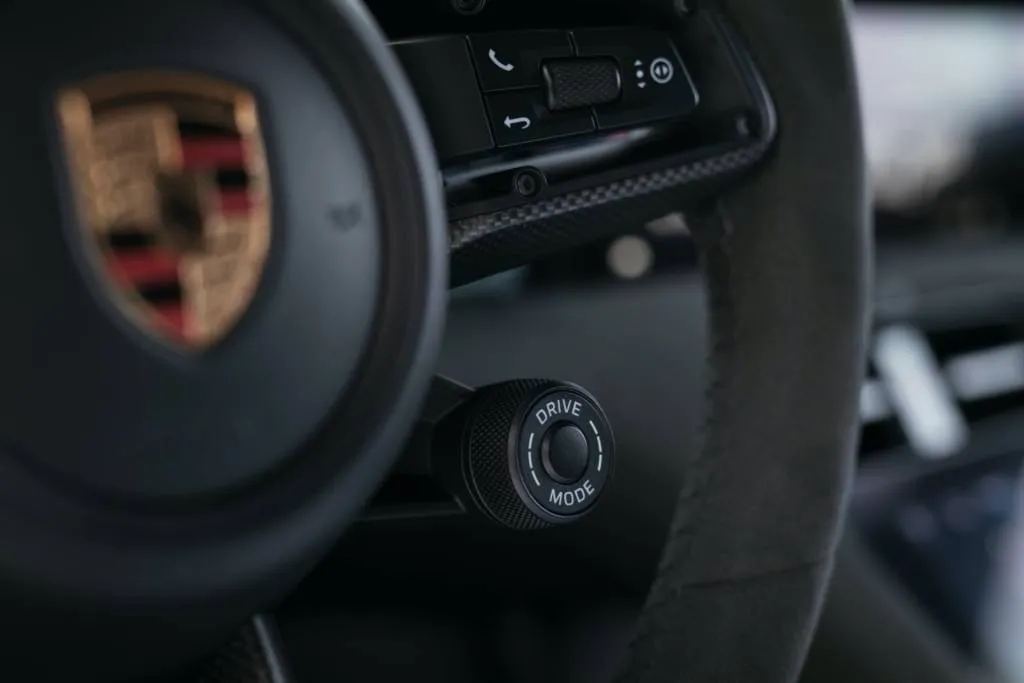
2025 Porsche Taycan Turbo GT
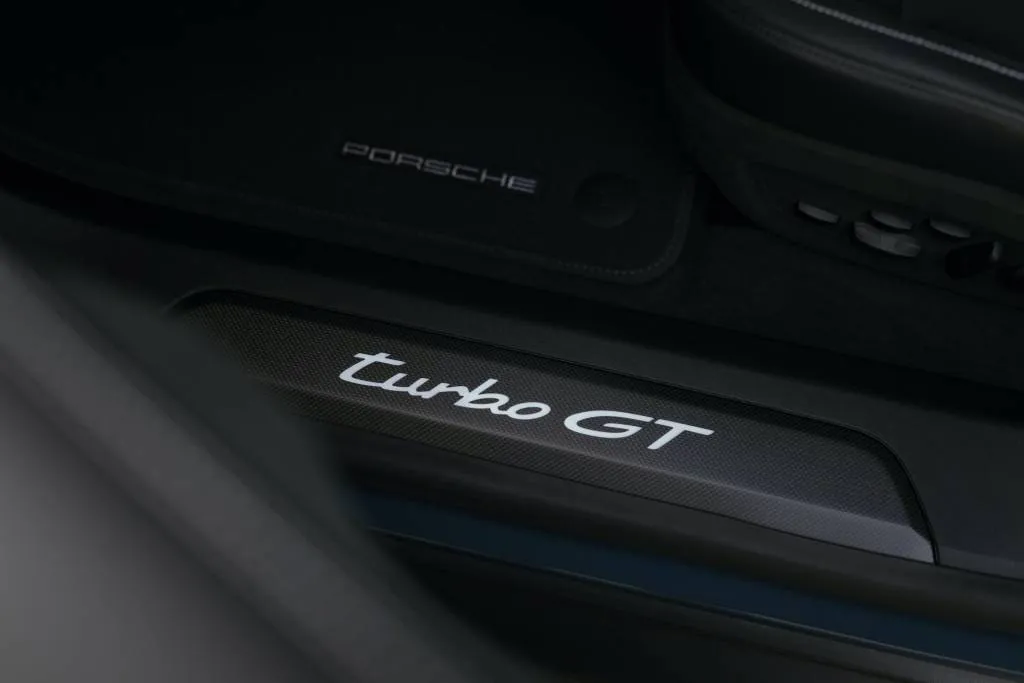
2025 Porsche Taycan Turbo GT
Considering a Weissach Package for your collection?
During my recent track experience at Monteblanco, I had the opportunity to test two high-performance Taycans set to hit U.S. dealerships in the summer of 2024. One of them is the Weissach Package, built upon the Turbo GT and starting at the same $231,995 price point.
The Weissach Package essentially mirrors the Nürburgring car, featuring optimized aerodynamics with a new front diffuser and fixed rear wing. These enhancements contribute to improved stability and increased downforce, with up to 303 pounds of additional downforce and a total of 484 pounds from overall aerodynamics at 190 mph.
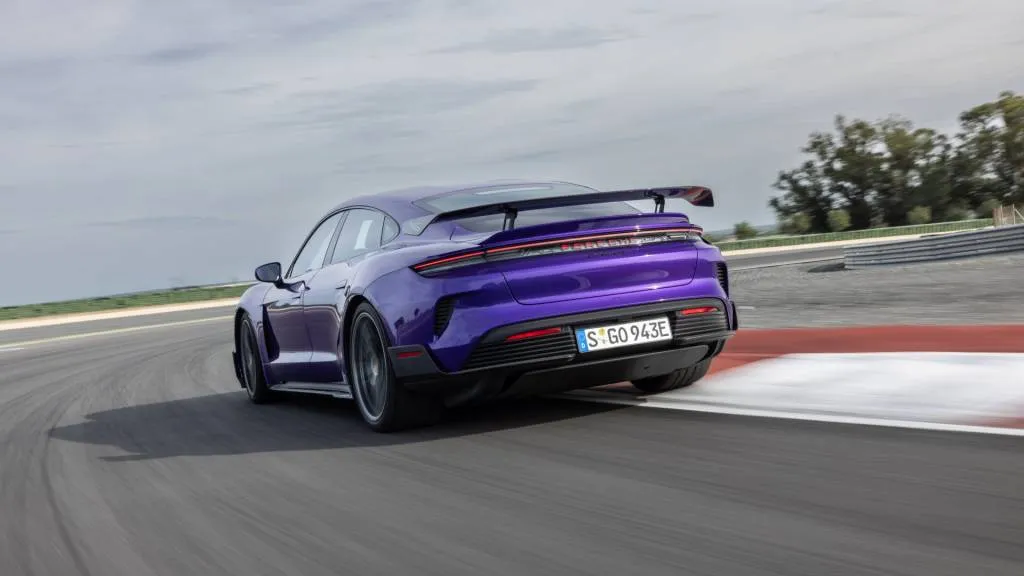
2025 Porsche Taycan Turbo GT Weissach package
The Weissach Package seems destined for the track, ready to be tucked away in the paddocks between hot laps—or entrusted to a fleet manager. However, it’s also a car that can effortlessly transition to a leisurely drive down nearby backroads, perhaps to a quaint small town for afternoon cappuccinos.
Although I can’t definitively discern or appreciate the Weissach version’s 157-pound weight reduction compared to the Turbo GT, I did notice during three additional laps that the sensory experience is distinctly different. There’s a noticeable increase in road noise inside, likely attributed to the carbon fiber construction, stripped-out insulation, and other weight-saving measures.
While the propulsion remains unchanged from the Turbo GT, the weight reduction does yield minor improvements in acceleration times. It now accelerates to 60 mph in 2.1 seconds (versus 2.2) and reaches 124 mph in 6.4 seconds (versus 6.6).
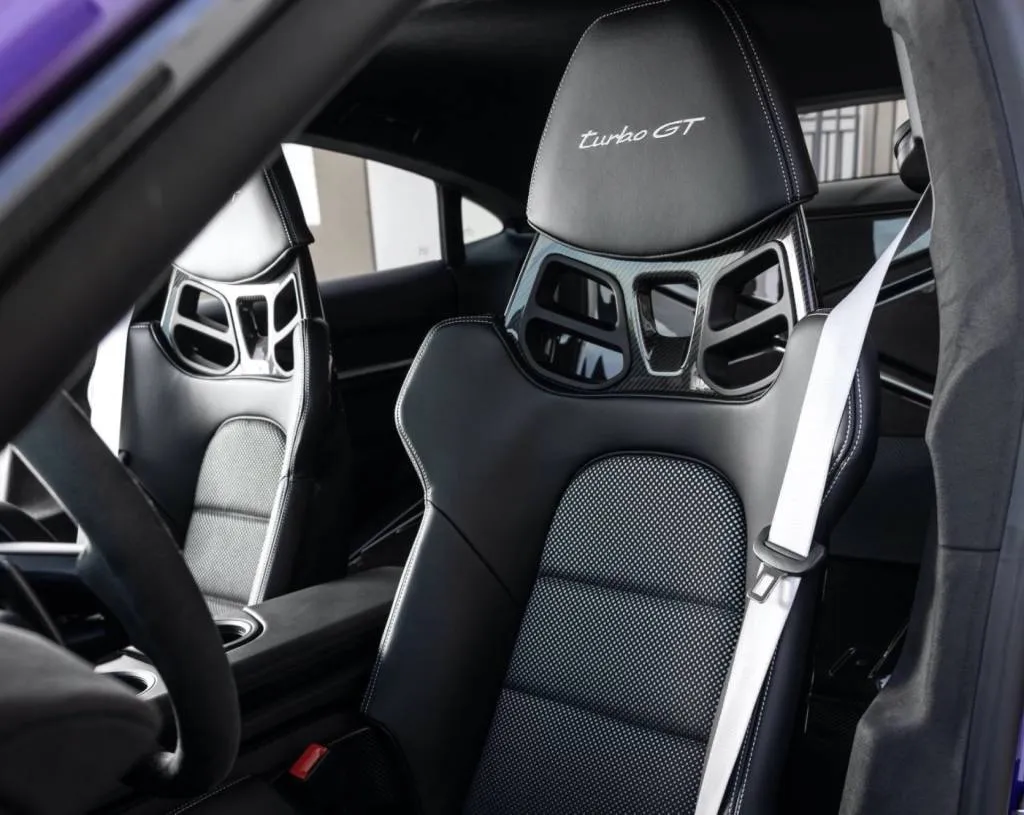
2025 Porsche Taycan Turbo GT Weissach package
The Weissach’s weight-saving carbon-fiber seats may seem ideal for the track, but they come with a few drawbacks. Essentially racing seats with strategic cushioning and bolstering, lack adjustability for rake or cushion tilt. As a 6-foot-6 individual, I found them less accommodating than what I’m accustomed to, with a more upright seating position desired. During an all-out launch control start in this model compared to the Turbo GT, the difference in seats became evident. While the GT’s seats snugly enveloped me, allowing me to focus solely on handling the G-forces, the same forces pulled my shoulder blades rearward into the carbon-fiber frame in the Weissach.
Another concern pertains to braking and recuperation. While all dual-motor Taycan models can now achieve up to 400 kW in brake recuperation/regeneration, most of it is allocated to the brake pedal. I observed that the transition to friction pads and their perceived “bite” varied too much depending on speed. In this brake-by-wire system, while I would eventually adapt to the behavior, it initially feels less consistent than it should. Additionally, this inconsistency may be related to the standard ceramic composite brakes in these models.

Porsche Taycan Turbo GT and Weissach package, at Monteblanco circuit
Regeneration that suits a track-focused EV?
Porsche maintains its preference for coasting and light regenerative braking in the Taycan. However, for track enthusiasts, a mode with significantly higher regenerative braking and a more traditional brake feel might be desirable.
Although Porsche has not disclosed EPA range figures for the 2025 Taycan lineup, it suggests that the performance enhancements of the Turbo GT model will likely come with a trade-off at the charging station. Based on European WLTP numbers, it is estimated that the Turbo GT may offer approximately 88% of the range of the Turbo S model. While it’s challenging to predict how many Taycan models will achieve EPA ratings exceeding 300 miles, those models are expected to fall below that threshold.
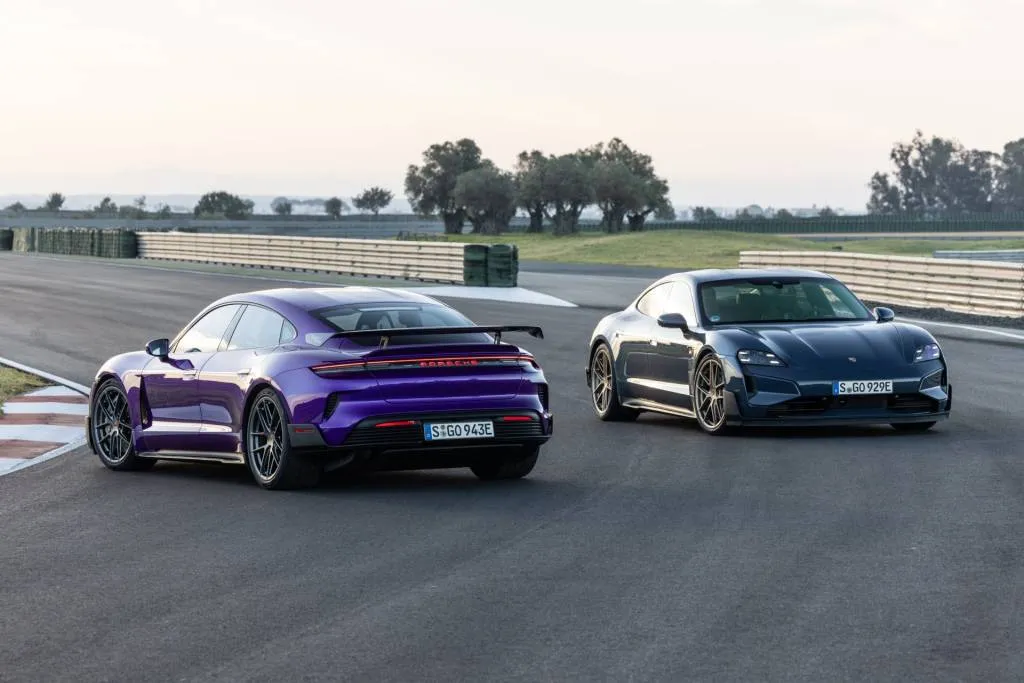
2025 Porsche Taycan Turbo GT Weissach package
With the redesigned 2025 Porsche Taycan, the prestigious brand made smart decisions by preserving the design and layout while enhancing range, performance, and efficiency—and it’s paying off handsomely. The technology that ensures this EV stays cool on the track and during charging sessions also enhances its performance to new levels of excellence.
– Porsche provided some travel, accommodations, and meals to facilitate access to the vehicle and track.
